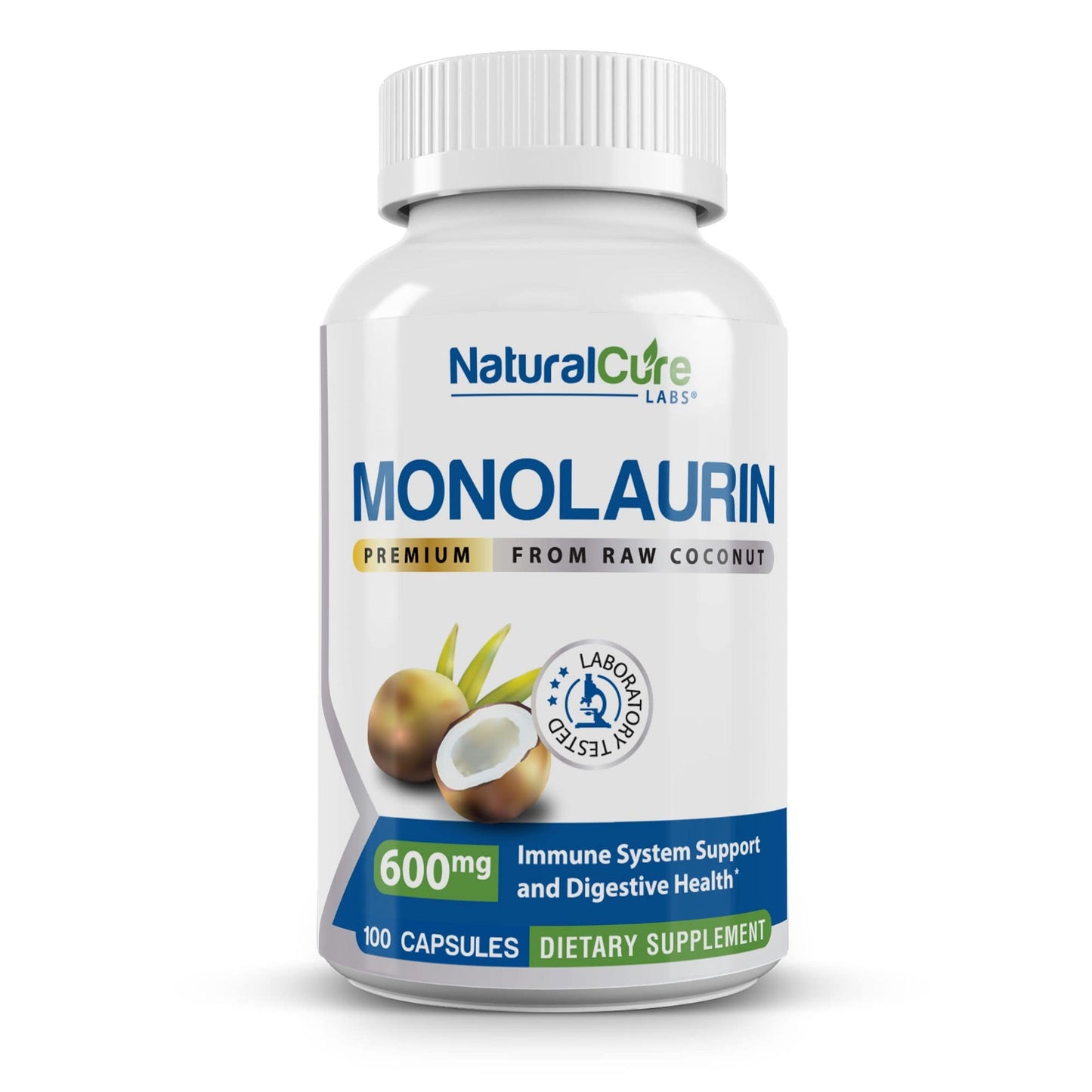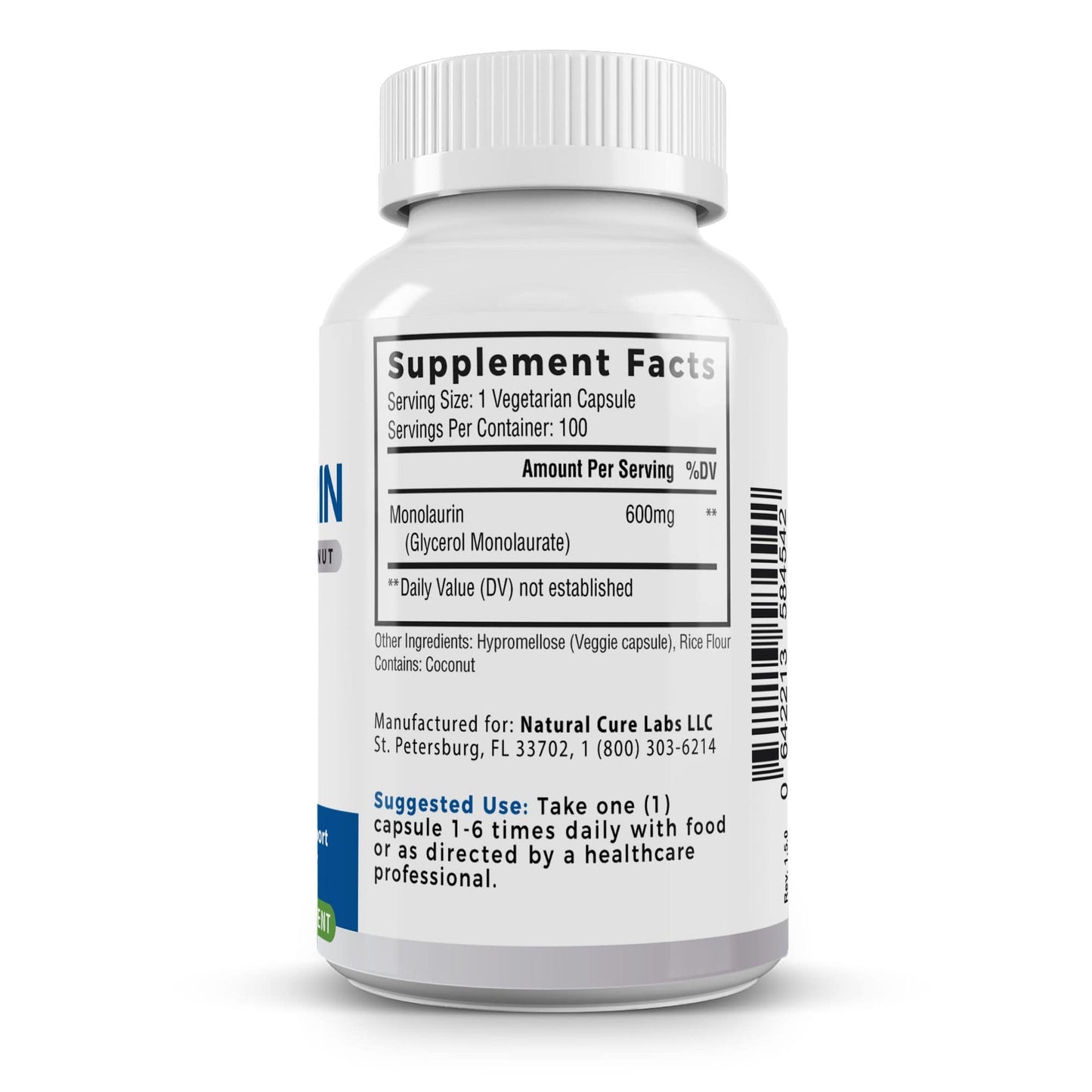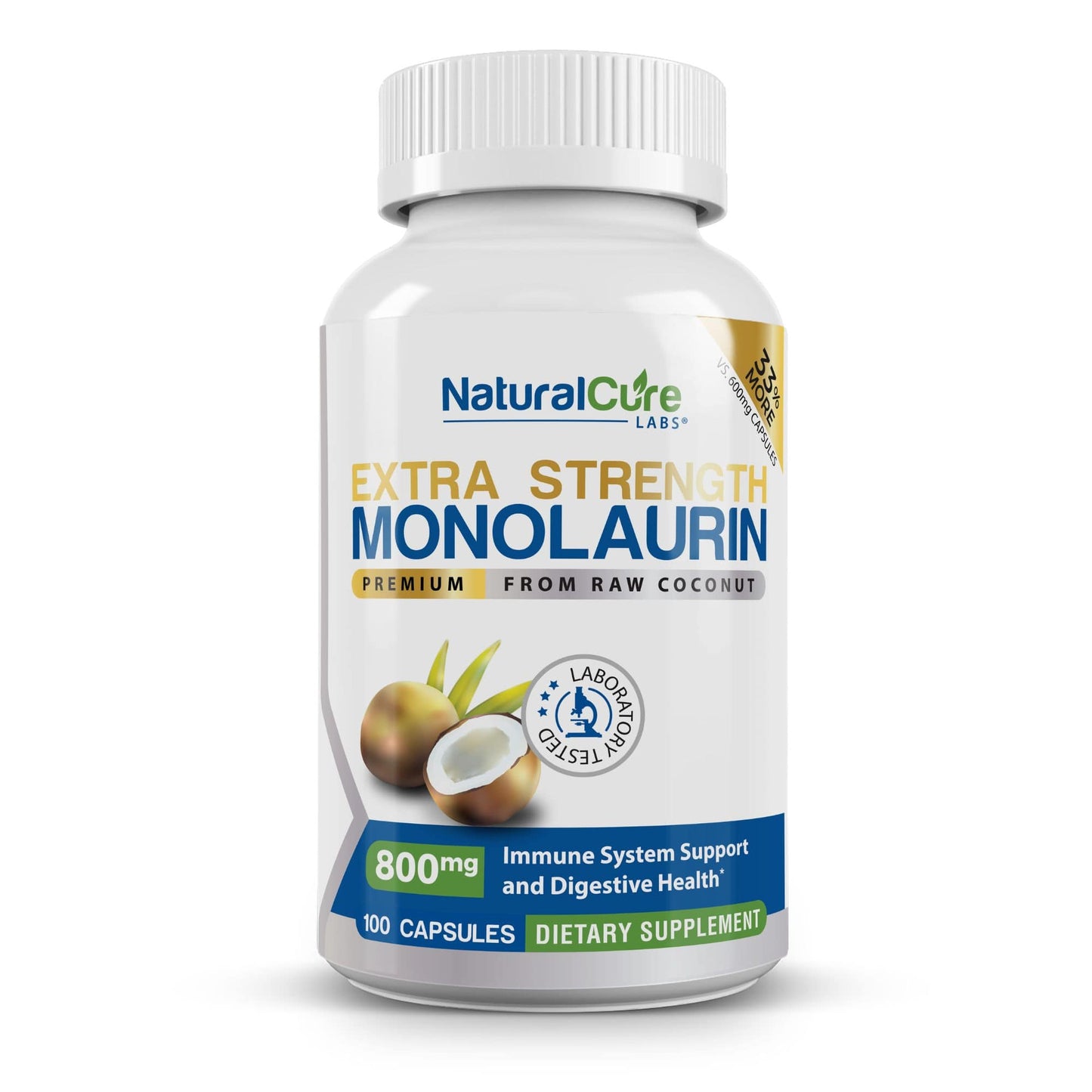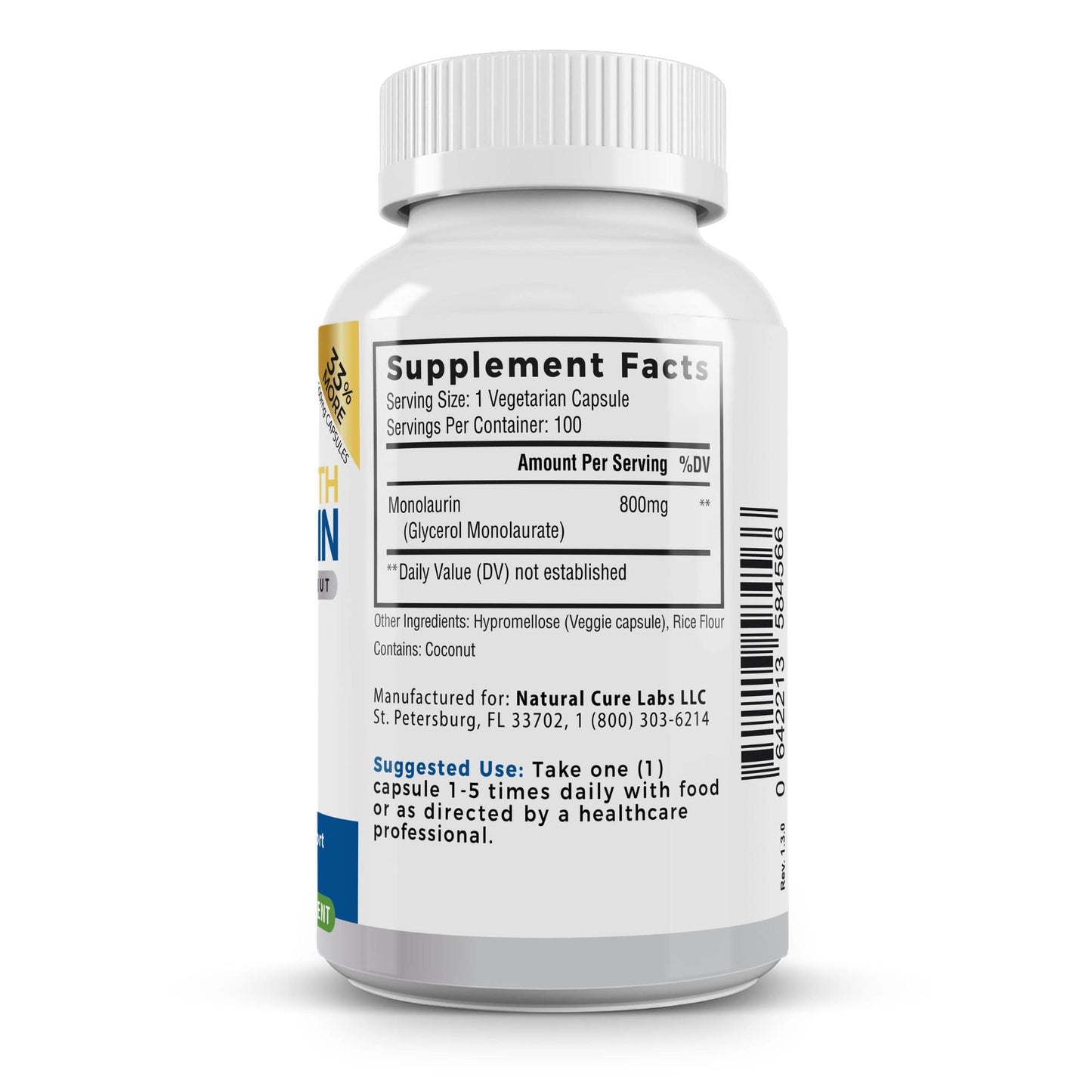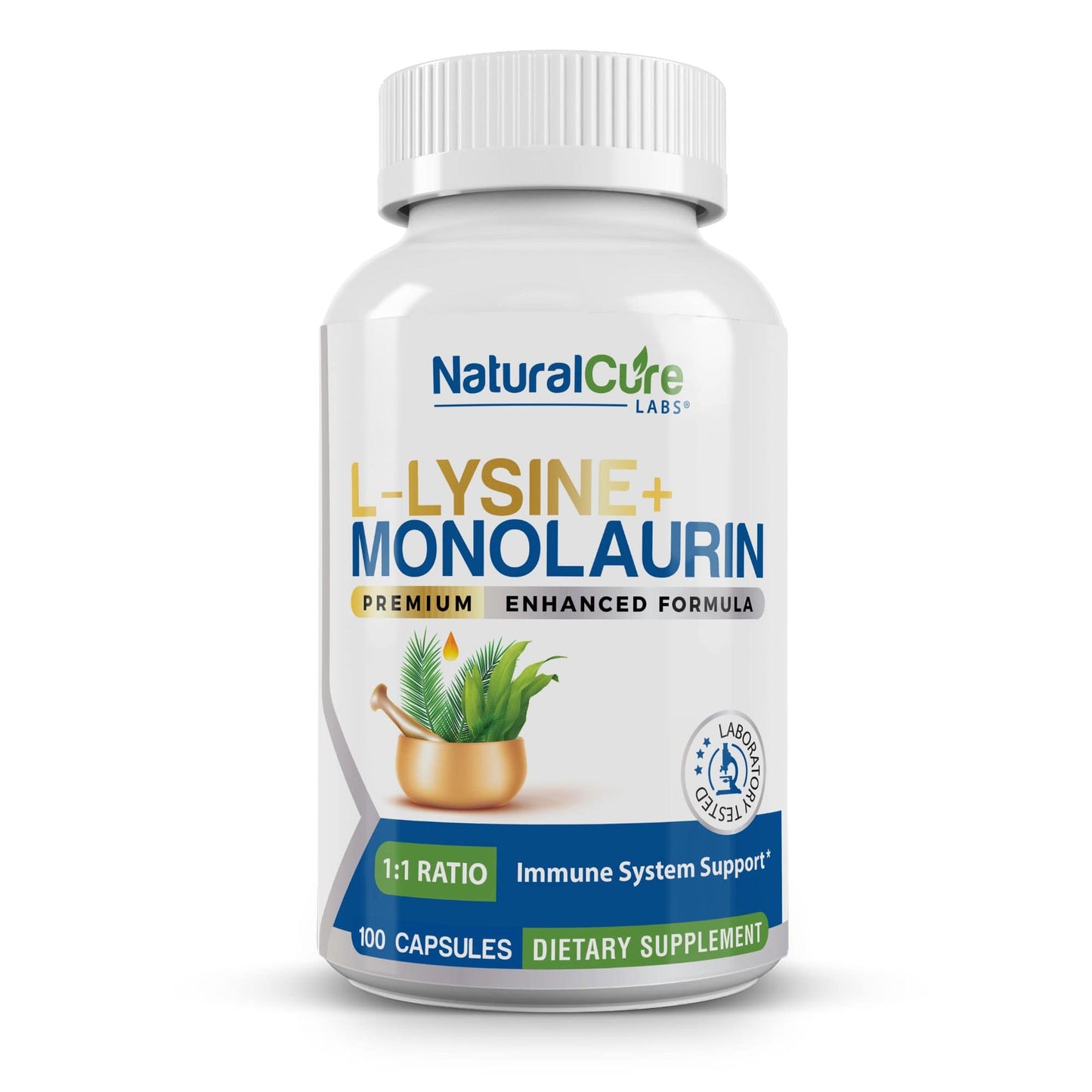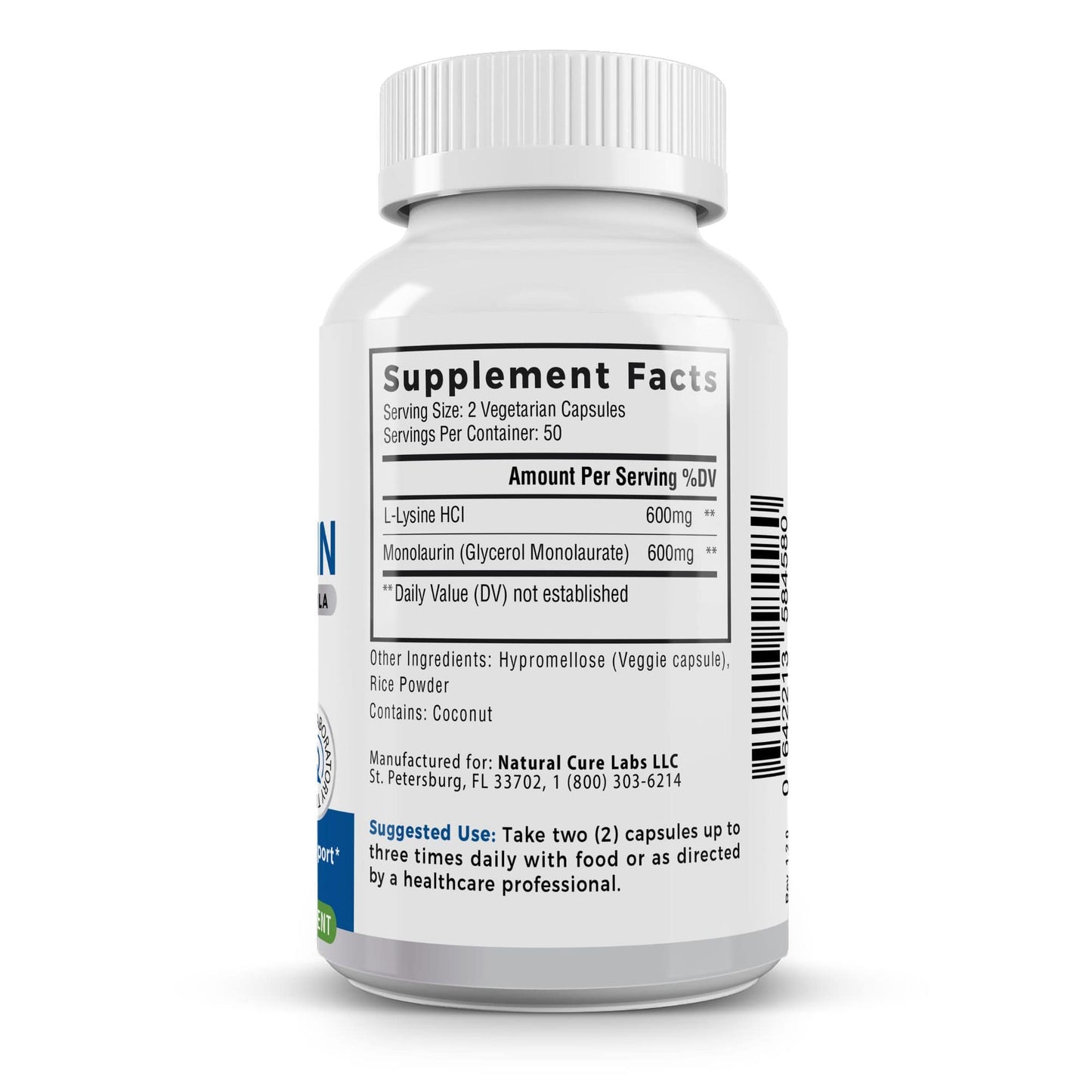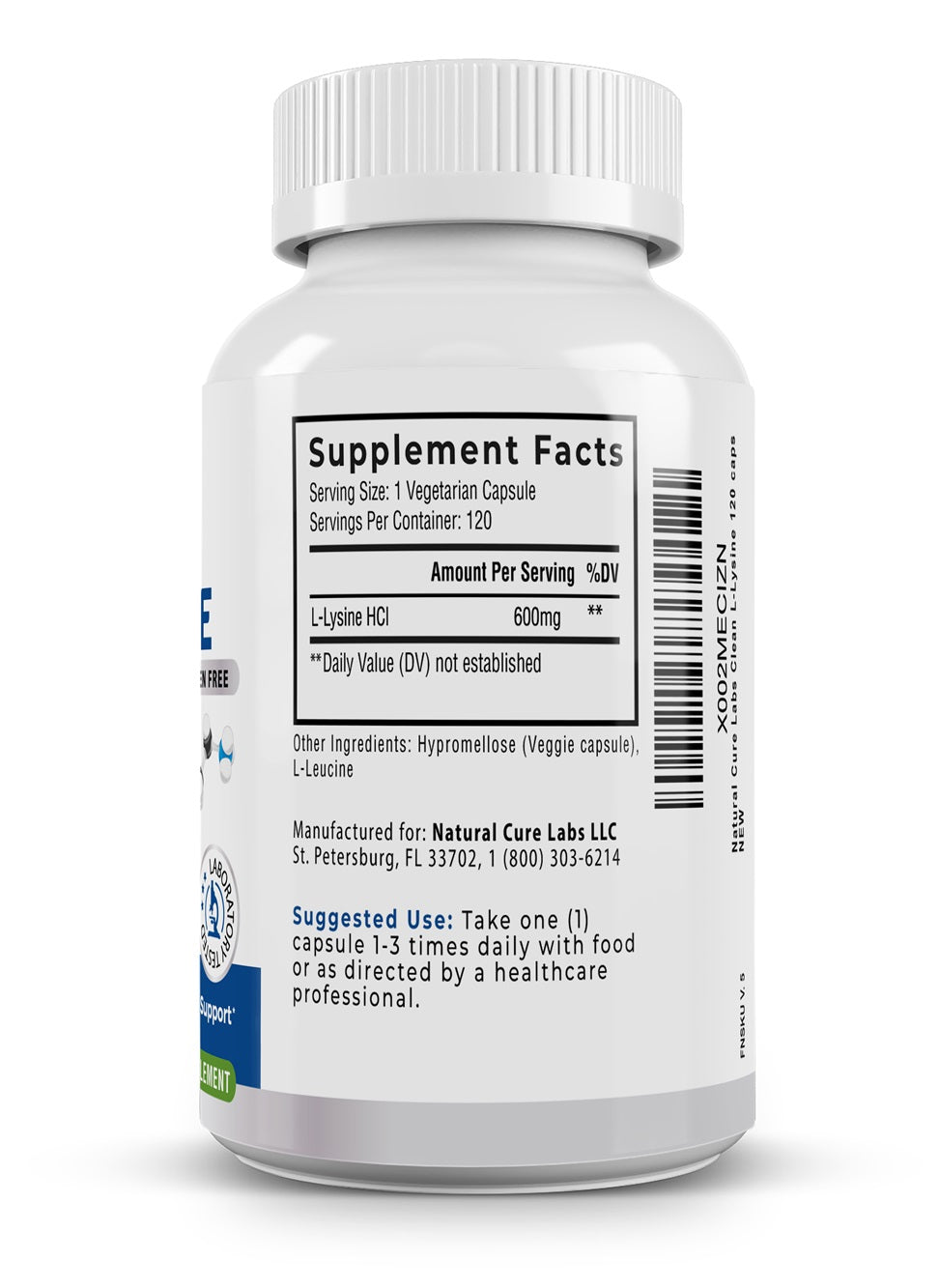
📝 Medically reviewed by Dr. Patricia Shelton
🔍 Last updated September 05, 2025
📚 10 citations
📖 5 minute read
Dr. Patricia Shelton, MD, has been a medical communicator and educator since 2014. She holds a Doctor of Medicine degree and a Bachelor's degree in Neuroscience, both from the University of Washington in Seattle.
–
Summary
- Monolaurin (also called glycerol monolaurate or glyceryl laurate) is a simple lipid (a fatty substance) made by joining lauric acid to glycerol.
- Human milk contains ~3,000 µg/mL of monolaurin; cow’s milk has ~150 µg/mL; most foods (coconut and palm oil) have only trace, variable amounts.
- Commercially, monolaurin generally isn’t extracted from milk. Instead, manufacturers synthesize monolaurin from plant oils that are rich in lauric acid (mainly coconut and palm-kernel oils).
- Monolaurin typically appears on product labels as “Monolaurin,” “Glycerol Monolaurate,” or “Glyceryl Laurate.”
Jump to:
- What is monolaurin?
- Where is monolaurin found naturally?
- Monolaurin for supplements
- Can you source monolaurin from milk?
- How is monolaurin identified on supplement ingredient lists?
- Conclusion
- References
With growing global attention on health and wellness, monolaurin is gaining traction, particularly in dietary supplements and research applications.
According to Verified Market Reports, the monolaurin market has a projected annual growth rate of 7.1% from 2026 to 2033.¹⁰
This steady growth highlights both the rising consumer awareness of wellness and the increasing demand for natural ingredients across industries. In this article, we’ll explore what monolaurin is, its sources, how it’s made, and more.
See Related: How Can Monolaurin Support Skin And Hair Health?
What is monolaurin?
Monolaurin is a type of triglyceride made by joining one fatty acid, called lauric acid, to glycerol. It can be called monolaurin, glycerol monolaurate (GML), or glyceryl laurate. It’s a fatty substance that occurs naturally in very small amounts, and is also made for use in foods, personal care products, and some supplements.¹
Where is monolaurin found naturally?
One well-documented natural source is human breastmilk. In a study comparing different milks, researchers reported:
“Human milk contained approximately 3000 μg/mL of glycerol monolaurate (GML), compared to 150 μg/mL in bovine milk and none in infant formula.” ²
Outside of breastmilk milk, only very small amounts of monolaurin are found in certain foods. Coconut oil, for example, may contain trace amounts, with the exact amount depending on the type of coconut oil and how it was processed. Some studies have measured small amounts, while others found almost none. What coconut oil does have in abundance is lauric acid (about 45–53%), which is a precursor to monolaurin. That’s why it’s often used as raw material to manufacture monolaurin in larger amounts.³
Palm-kernel oil is similar. It is rich in lauric acid (about 46–56% depending on the fraction), and is also commonly used to produce monolaurin. However, like coconut oil, palm-kernel oil itself doesn’t naturally provide consistent or high levels of monolaurin in its consumer form.⁶

Monolaurin for supplements
With oral supplements, monolaurin is generally manufactured from plant fats that are naturally rich in lauric acid, usually coconut oil or palm-kernel oil. Manufacturers start with one of these oils and use standard food chemistry to turn it into monolaurin, which is then purified and put into capsules or powders.¹ ³ ⁶
Can you source monolaurin from milk?
Even though human breastmilk contains measurable levels of glycerol monolaurate, collecting and processing milk as a raw material for a supplement is not practical. Cow’s milk levels are too low for efficient extraction at scale.
By contrast, coconut and palm-kernel oils are naturally rich in lauric acid (the building block for monolaurin), are produced in large volumes, and can be chemically or enzymatically converted into high-purity monolaurin which canthen be purified for use as a supplement.³ ⁴ ⁶ ⁸
How is monolaurin identified on supplement ingredient lists?
On supplement and product labels you might see “Monolaurin,” “Glycerol monolaurate,” or “Glyceryl laurate.” They are synonyms for the same molecule.¹ The label may also list the source of the lauric acid used during manufacturing by saying “from coconut (or palm kernel) oil.”.³ ⁶
You might also see monolaurin included within lipid blends or capsules, where it’s combined with other excipients (for flow, stability, or fill). Because monolaurin is not easily soluble in water, you’ll more often find it in capsules or solid forms rather than in water-based liquids.¹
This may explain why monolaurin is generally not used as an ingredient in functional beverages.
Conclusion
Monolaurin is a simple lipid made from glycerol and lauric acid. It occurs naturally in small amounts in milk, particularly in human breast milk, and manufacturers can also synthesize it from lauric acid-rich plant oils like coconut and palm kernel.
When considering monolaurin, it is best to compare products by their identity, source, quality, and amount per serving. If you are considering taking monolaurin, talk with a healthcare professional and choose products from brands that disclose clear sourcing and testing.
Keep reading: Monolaurin Supplement Benefits, Dosing, and Uses
References
- Barker LA, Bakkum BW, Chapman C. The Clinical Use of Monolaurin as a Dietary Supplement: A Review of the Literature. J Chiropr Med. 2020;18(4):305–310. doi: 10.1016/j.jcm.2019.02.004
- Schlievert PM, Kilgore SH, Seo KS, et al. Glycerol Monolaurate Contributes to the Antimicrobial and Anti-inflammatory Activity of Human Milk. Sci Rep. 2019;9:14550. doi: 10.1038/s41598-019-51130-y
- Dayrit FM. The Properties of Lauric Acid and Their Significance in Coconut Oil. J Am Oil Chem Soc. 2015;92(1):1–15. doi: 10.1007/s11746-014-2562-7
- Baum S, Ottenheim M, Schmölzer S, et al. The role of phase behavior in the enzyme-catalyzed synthesis of monoacylglycerols. RSC Adv. 2016;6:47369–47376. doi: 10.1039/C6RA05181B
- FDA GRAS Notice No. 648 (2016). Monoglycerides—digestion/metabolism statement. (“Following its oral ingestion, glyceryl monoesters… are metabolized to free fatty acids and glycerol.”) PDF
- Ngatirah N, Hidayat C, Rahayu E, Utami T. Enzymatic Glycerolysis of Palm Kernel Olein–Stearin Blend for Monolaurin Synthesis. Foods. 2022;11(16):2412. doi: 10.3390/foods11162412
- 21 CFR §184.1505 — Mono- and diglycerides. U.S. eCFR. (“…used in food with no limitation other than current good manufacturing practice.”) Link
- Chen Y, Liu H, Wang J, et al. Production of glycerol monolaurate-enriched monoacylglycerols by enzymatic glycerolysis in microemulsion systems and molecular distillation. Eur J Lipid Sci Technol. 2013;115(12):1419–1427. doi: 10.1002/ejlt.201300243
- Johnson W Jr, et al. Final Report of the Safety Assessment of Glyceryl Laurate and Related Glyceryl Monoesters. Int J Toxicol. 2004;23(Suppl 2):55–94. doi: 10.1080/10915810490499064
- Verified Market Reports. Monolaurin Market Size, Research, Consumer Behavior & Insights. (accessed Sept 2, 2025). https://www.verifiedmarketreports.com/product/monolaurin-market/
--
Natural Cure Labs provides dietary supplements made from naturally derived ingredients. Our research-backed products contain premium botanicals and antioxidants that encourage healthy living and holistic wellness. Each high-quality product comes with a Clean Label that certifies our commitment to quality, transparency, and research.

